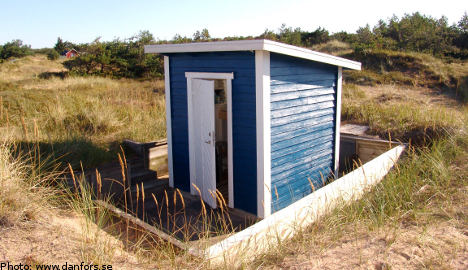“You get four walls and a roof, a door… and a little window,” said real estate agent Conny Wistrand to The Local.
Wistrand is aware that a three square metre summer cottage can’t offer much more than the novelty of being the cosiest cottage in the country, but he claimed that for 139,000 kronor ($20,780) there are a few added benefits.
“It’s extremely close to the beach and you get your own parking space,” he said, adding that these can be a nightmare to find in the area when the weather is good.
“It’s not the kind of place you’d want to live, but it’s perfect for one night, or a good day base if you’re at the beach. There are two beds there if you need a sleep, or you could always just use the cottage as a storage area while you’re enjoying the beach”.
Click here to see more photos of the summer house
The cottage is one of about 100 in the area; however Wistrand is confident that this one in particular takes the prize as the absolute smallest, even though the size means other essentials are overlooked.
“I should add, there’s no electricity or water, you can’t build on to the house, or renovate it – it is on private land. But you could always paint it if you wanted to give it some TLC,” he said.
According to the agent, there has already been some interest in the place, and he predicts it will be sold before the end of the week.
“Keep your eye on this listing,” he said. “It won’t be around for long.”




 Please whitelist us to continue reading.
Please whitelist us to continue reading.
Member comments